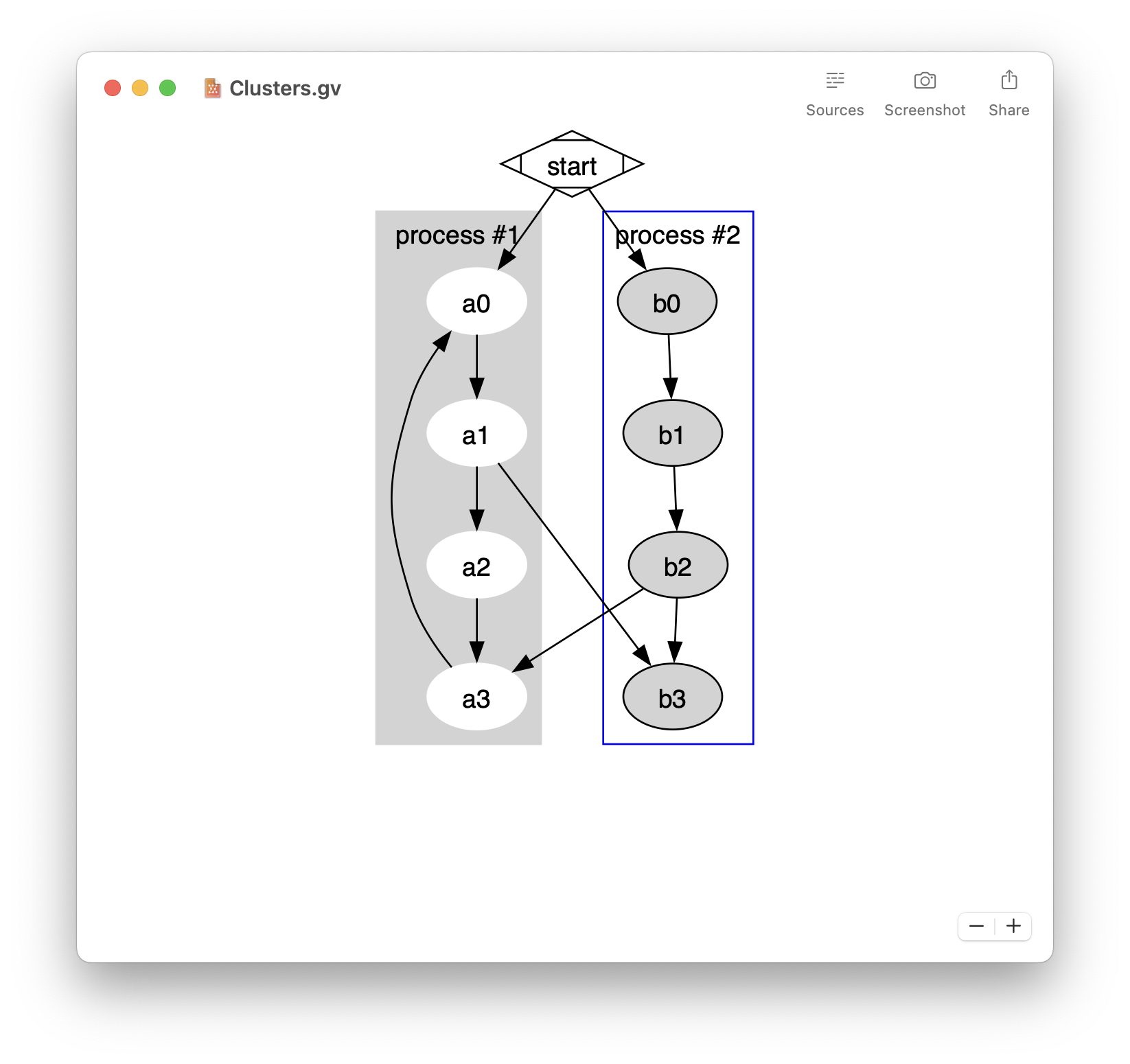With Xcode 5, it is now possible to compile an application for armv7 and/or arm64.
You can compile an application as 32-bit and/or as 64-bit and you can run this application in a 32-bit or 64-bit iOS Simulator:
- Easily preview Mermaid diagrams
- Sequence diagrams, flowcharts, …
- Built-in editor
- Export to PDF, PNG, and SVG
- Quick Look integration
- Available on macOS, iOS, and iPadOS
- Free download on the App Store

In fact there are 3 different cases:
- 32-bit application running in a 32-bit iOS Simulator
- 32-bit application running in a 64-bit iOS Simulator
- 64-bit application running in a 64-bit iOS Simulator
It is possible to distinguish these 3 different cases but this is not as easy as I would expected.
The case of a 64-bit application running in a 64-bit iOS Simulator is simple to solve by just using the define __LP64__: A 64-bit application can only run in a 64-bit iOS Simulator.
Distinguishing the 2 other cases is more difficult and a runtime check is needed. Something to note is that the ‘iOS Simulator’ process is running as 64-bit even in the case of a 32-bit iOS Simulator.
I noticed however that a process called ‘SimulatorBridge’ is used:
- When launching an 64-bit iOS Simulator, the process ‘SimulatorBridge’ runs as 64-bit
- When launching an 32-bit iOS Simulator, the process ‘SimulatorBridge’ runs as 32-bit

Below is a function to know if the iOS Simulator is a 32-bit Simulator or a 64-bit Simulator. The function is64bitSimulator() returns true if the iOS Simulator is a 64-bit iOS Simulator:
#include <sys/sysctl.h>
#if TARGET_IPHONE_SIMULATOR
bool is64bitSimulator()
{
bool is64bitSimulator = false;
/* Setting up the mib (Management Information Base) which is an array of integers where each
* integer specifies how the data will be gathered. Here we are setting the MIB
* block to lookup the information on all the BSD processes on the system. Also note that
* every regular application has a recognized BSD process accociated with it. We pass
* CTL_KERN, KERN_PROC, KERN_PROC_ALL to sysctl as the MIB to get back a BSD structure with
* all BSD process information for all processes in it (including BSD process names)
*/
int mib[6] = {0,0,0,0,0,0};
mib[0] = CTL_KERN;
mib[1] = KERN_PROC;
mib[2] = KERN_PROC_ALL;
long numberOfRunningProcesses = 0;
struct kinfo_proc* BSDProcessInformationStructure = NULL;
size_t sizeOfBufferRequired = 0;
/* Here we have a loop set up where we keep calling sysctl until we finally get an unrecoverable error
* (and we return) or we finally get a succesful result. Note with how dynamic the process list can
* be you can expect to have a failure here and there since the process list can change between
* getting the size of buffer required and the actually filling that buffer.
*/
BOOL successfullyGotProcessInformation = NO;
int error = 0;
while (successfullyGotProcessInformation == NO)
{
/* Now that we have the MIB for looking up process information we will pass it to sysctl to get the
* information we want on BSD processes. However, before we do this we must know the size of the buffer to
* allocate to accomidate the return value. We can get the size of the data to allocate also using the
* sysctl command. In this case we call sysctl with the proper arguments but specify no return buffer
* specified (null buffer). This is a special case which causes sysctl to return the size of buffer required.
*
* First Argument: The MIB which is really just an array of integers. Each integer is a constant
* representing what information to gather from the system. Check out the man page to know what
* constants sysctl will work with. Here of course we pass our MIB block which was passed to us.
* Second Argument: The number of constants in the MIB (array of integers). In this case there are three.
* Third Argument: The output buffer where the return value from sysctl will be stored. In this case
* we don't want anything return yet since we don't yet know the size of buffer needed. Thus we will
* pass null for the buffer to begin with.
* Forth Argument: The size of the output buffer required. Since the buffer itself is null we can just
* get the buffer size needed back from this call.
* Fifth Argument: The new value we want the system data to have. Here we don't want to set any system
* information we only want to gather it. Thus, we pass null as the buffer so sysctl knows that
* we have no desire to set the value.
* Sixth Argument: The length of the buffer containing new information (argument five). In this case
* argument five was null since we didn't want to set the system value. Thus, the size of the buffer
* is zero or NULL.
* Return Value: a return value indicating success or failure. Actually, sysctl will either return
* zero on no error and -1 on error. The errno UNIX variable will be set on error.
*/
error = sysctl(mib, 3, NULL, &sizeOfBufferRequired, NULL, 0);
if (error)
return NULL;
/* Now we successful obtained the size of the buffer required for the sysctl call. This is stored in the
* SizeOfBufferRequired variable. We will malloc a buffer of that size to hold the sysctl result.
*/
BSDProcessInformationStructure = (struct kinfo_proc*) malloc(sizeOfBufferRequired);
if (BSDProcessInformationStructure == NULL)
return NULL;
/* Now we have the buffer of the correct size to hold the result we can now call sysctl
* and get the process information.
*
* First Argument: The MIB for gathering information on running BSD processes. The MIB is really
* just an array of integers. Each integer is a constant representing what information to
* gather from the system. Check out the man page to know what constants sysctl will work with.
* Second Argument: The number of constants in the MIB (array of integers). In this case there are three.
* Third Argument: The output buffer where the return value from sysctl will be stored. This is the buffer
* which we allocated specifically for this purpose.
* Forth Argument: The size of the output buffer (argument three). In this case its the size of the
* buffer we already allocated.
* Fifth Argument: The buffer containing the value to set the system value to. In this case we don't
* want to set any system information we only want to gather it. Thus, we pass null as the buffer
* so sysctl knows that we have no desire to set the value.
* Sixth Argument: The length of the buffer containing new information (argument five). In this case
* argument five was null since we didn't want to set the system value. Thus, the size of the buffer
* is zero or NULL.
* Return Value: a return value indicating success or failure. Actually, sysctl will either return
* zero on no error and -1 on error. The errno UNIX variable will be set on error.
*/
error = sysctl(mib, 3, BSDProcessInformationStructure, &sizeOfBufferRequired, NULL, 0);
if (error == 0)
{
//Here we successfully got the process information. Thus set the variable to end this sysctl calling loop
successfullyGotProcessInformation = YES;
}
else
{
/* failed getting process information we will try again next time around the loop. Note this is caused
* by the fact the process list changed between getting the size of the buffer and actually filling
* the buffer (something which will happen from time to time since the process list is dynamic).
* Anyways, the attempted sysctl call failed. We will now begin again by freeing up the allocated
* buffer and starting again at the beginning of the loop.
*/
free(BSDProcessInformationStructure);
}
} //end while loop
/* Now that we have the BSD structure describing the running processes we will parse it for the desired
* process name. First we will the number of running processes. We can determine
* the number of processes running because there is a kinfo_proc structure for each process.
*/
numberOfRunningProcesses = sizeOfBufferRequired / sizeof(struct kinfo_proc);
for (int i = 0; i < numberOfRunningProcesses; i++)
{
//Getting name of process we are examining
const char *name = BSDProcessInformationStructure[i].kp_proc.p_comm;
if(strcmp(name, "SimulatorBridge") == 0)
{
int p_flag = BSDProcessInformationStructure[i].kp_proc.p_flag;
is64bitSimulator = (p_flag & P_LP64) == P_LP64;
break;
}
}
free(BSDProcessInformationStructure);
return is64bitSimulator;
}
#endif // TARGET_IPHONE_SIMULATOR




